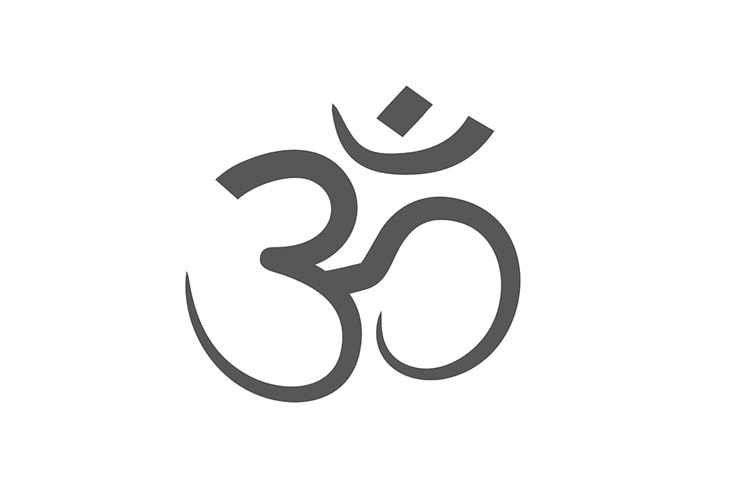|
Everything in life is vibration. - Albert Einstein Yoga Sutra 1.26 स पूर्वेषाम् अपि गुरुः कालेनानवच्छेदात्॥२६ sa pūrveṣām-api-guruḥ kālena-anavacchedāt Unconditioned by Time, Isvara Is the Teacher of Even the Most Ancient Teachers Why do we chant Om in yoga? Why chant at all? As modern science is beginning to shed light on the mechanisms behind the ancient science of yoga, we are learning that vibration - energy - is all around us and within us. After all, didn’t Einstein also determine that matter (e.g. our body) is simply a manifestation of energy in the physical plane? Chanting produces energy in the form of vibration. Some vibrations are stimulating and some are calming. These vibrations affect our energy. For example, would you like to use Heavy Metal music to fall asleep? If you’re on a road trip and want to stay awake, do you put Enya on? Of course not! Each vibration has its place. Om is a chant we use to calm us. That raises another question though. Why does Om calm us? Although yoga is not a religion, it is part of a spiritual philosophy. In this philosophy (called Vedanta), the Universal Consciousness, which some people call God, is known as Isvara. This is a “distinct Self” (Stiles, 8), separate from our individual self. Yoga Sutra 1.23 tells us that the simplest way to attain our goal - Samadhi - is by surrendering to this universal energy we are a part of. This is known as Isvara Pranidhana. The process of surrendering to our place in the universe helps “attract profound grace through wholehearted detachment and immersion in the [Universal] Self.” (Shoshoni, 10) Life can be very difficult. Surrender is a balm. The reason Isvara Pranidhana is so effective is that as the Universal Self (big S), Isvara is not caught up in the limitations our time-bound individual self (small s) experiences. This is explained in Yoga Sutra 1.24. Isvara needs nothing. Isvara isn’t afflicted by loss or conflict. Isvara is untouched by cause and effect. And Isvara has no latent desires. Isvara is just there existing for existence’s sake and therefore is always at peace. That is the energy we emerge from and reintegrate into at the beginning and end of our lives. It is our natural state and the “source of all.” (Shoshoni, 11) We just get caught up in the limited nature of our time-bound existence and experience discomfort through the dualities (good vs. bad, pleasurable vs. painful, easy vs. hard, etc.) we are bound to experience. Isvara experiences the dualities through us but remains unaffected. Isvara then, is “the seed of omniscience”. Omniscience is mighty hard for us to grasp as limited beings who are not omniscient. Swami Satchidananda gives a nice example to explain this concept. Imagine a circle. You see the space within it and the space outside it. The inner space is finite and the outer is infinite. If you accept the existence of a finite space, automatically you have to accept an infinite one. (65) If in our dual world there is a finite existence, there must be an infinite one as well. Since Isvara is outside the finite and is therefore, “unconditioned by time,” (Satchidananda, 65) Isvara is “the guru of the most ancient spiritual teachers.” (Stiles, 8) Yoga sprang from an oral tradition, passing wisdom from teacher to student in succession. Even our most ancient spiritual teachers must have had inspiration from somewhere. The source is Isvara. Om is the sound expressive of Isvara. It isn’t simply a word to denote Isvara. It is the sound of Isvara itself. In Sanskrit, this is called padartha, which is a word in which the name and the form are one and the same. We can’t drive the word “car” but Om brings us to Isvara. BKS Iyengar clarifies that since the subtlest form of energy is vibration (even subatomic particles vibrate), it is the closest we can come to experiencing the Universal Self. (80-81) So now, what is Om, specifically - why is this word said to be the origin of all other words? Om is actually made up of four stages, according to the Mandukya Upanishad. The first sound is “ah,” which is the sound that begins most, if not every language. It is produced at the back of the throat. The sound then travels forward on the tongue and palate, creating an “ou” sound. The lips close then, creating an “mmm” or humming sound. Finally, the last sound, which is called anagata, is beyond verbal pronunciation and indicated by silence. That is why you will sometimes see Om spelled “Aum”. Further, Om is indicative of the three states of existence recognized in Vedanta - creating, sustaining and dissolving. (Satchidananda, 68-70) Similarly, I wonder if the anagata represents the space after dissolution and before creation. Repeating this sound with reverence can help us reach a state wherein we understand our inner Self and all obstacles on our spiritual pathway disappear (Yoga Sutras 1.28 - 1.29). This is a state of true “spiritual wealth.” (Stiles, 9) Patanjali explains what these obstacles are in the next Sutra and also speaks about how to get past them in more detail in the next several Sutras. << PREVIOUS BLOG POST IN YOGA SUTRA SERIES NEXT BLOG POST IN YOGA SUTRA SERIES COMING OCTOBER How would you symbolize the Universal Self? Has chanting or music ever created this calm state of being for you?
0 Comments
Leave a Reply. |
Archives
July 2024
About
Just some thoughts about yoga as I go... Categories
All
|
FIVE KEYS YOGA
|
WHAT OUR CLIENTS SAYFive Keys is fantastic! The studio is lovely and soothing, and the teachers are very caring and attentive. |
I've ... probably been to 25 different yoga studios. This is one of the most welcoming, calming spaces with very talented instructors. |
I love this yoga studio. It's a great balance of a good workout and relaxation and feels like a real community. |
An ideal studio for someone new to yoga. |


 RSS Feed
RSS Feed
